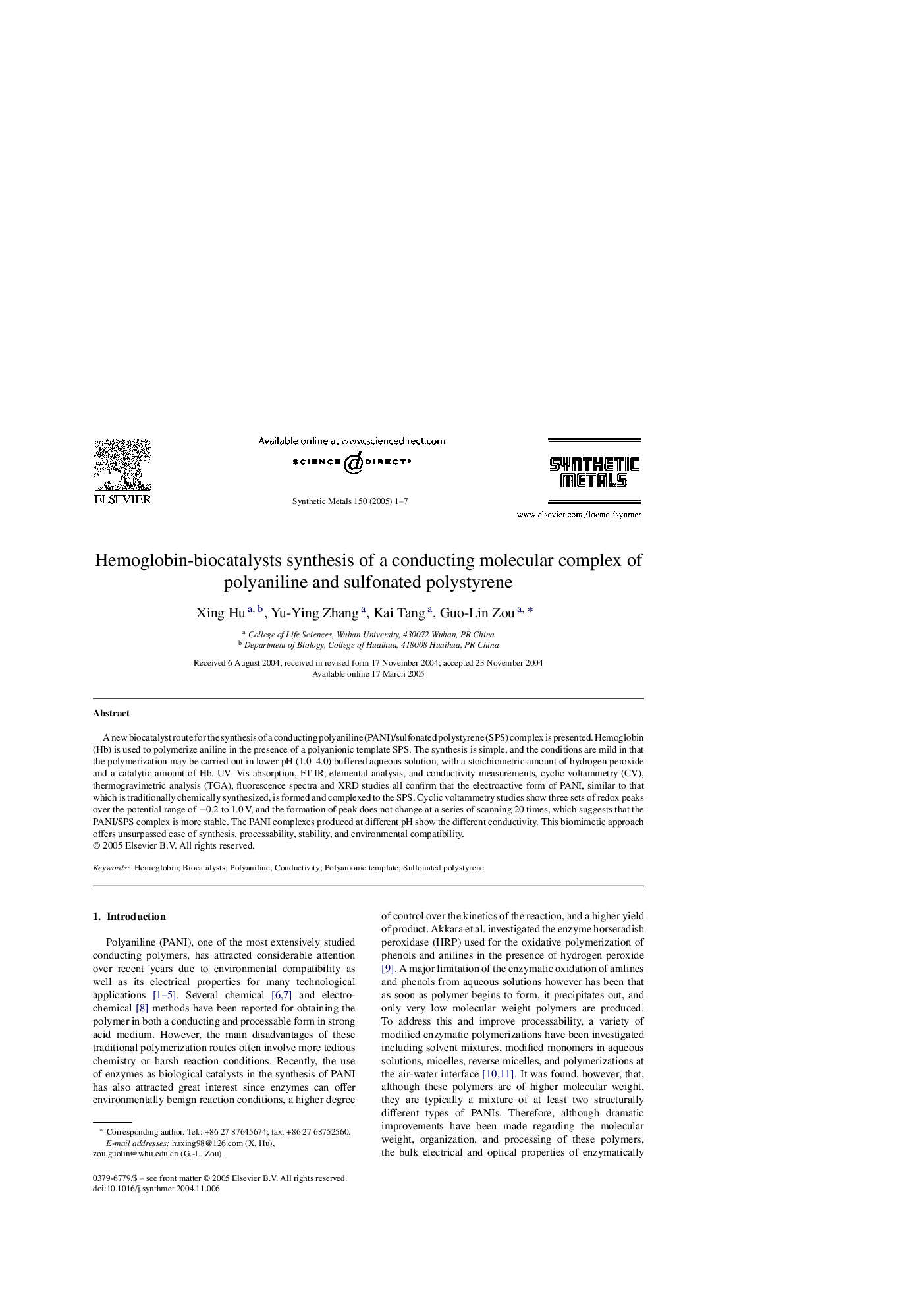| Article ID | Journal | Published Year | Pages | File Type |
|---|---|---|---|---|
| 10618664 | Synthetic Metals | 2005 | 7 Pages |
Abstract
A new biocatalyst route for the synthesis of a conducting polyaniline (PANI)/sulfonated polystyrene (SPS) complex is presented. Hemoglobin (Hb) is used to polymerize aniline in the presence of a polyanionic template SPS. The synthesis is simple, and the conditions are mild in that the polymerization may be carried out in lower pH (1.0-4.0) buffered aqueous solution, with a stoichiometric amount of hydrogen peroxide and a catalytic amount of Hb. UV-Vis absorption, FT-IR, elemental analysis, and conductivity measurements, cyclic voltammetry (CV), thermogravimetric analysis (TGA), fluorescence spectra and XRD studies all confirm that the electroactive form of PANI, similar to that which is traditionally chemically synthesized, is formed and complexed to the SPS. Cyclic voltammetry studies show three sets of redox peaks over the potential range of â0.2 to 1.0Â V, and the formation of peak does not change at a series of scanning 20 times, which suggests that the PANI/SPS complex is more stable. The PANI complexes produced at different pH show the different conductivity. This biomimetic approach offers unsurpassed ease of synthesis, processability, stability, and environmental compatibility.
Related Topics
Physical Sciences and Engineering
Materials Science
Biomaterials
Authors
Xing Hu, Yu-Ying Zhang, Kai Tang, Guo-Lin Zou,
